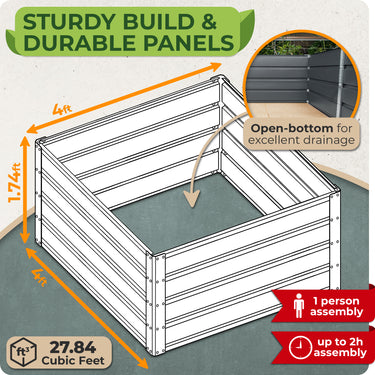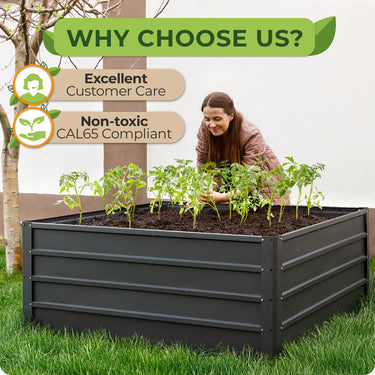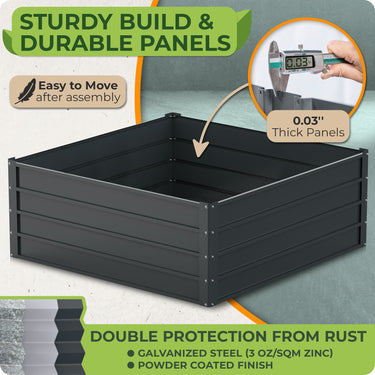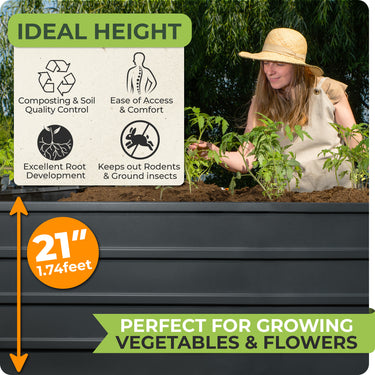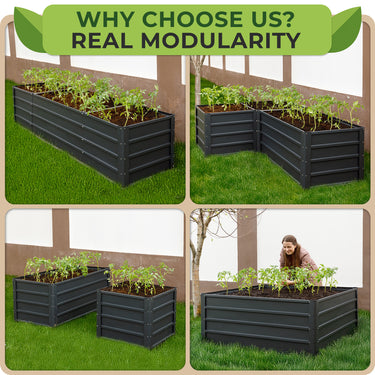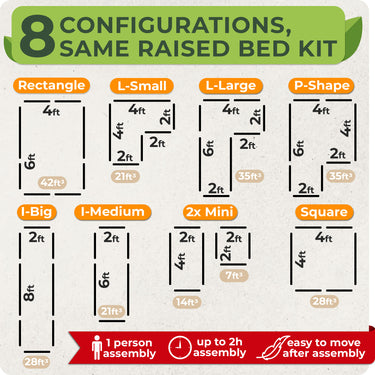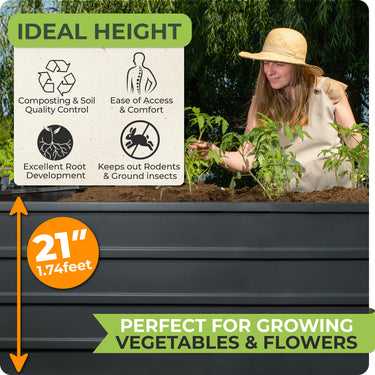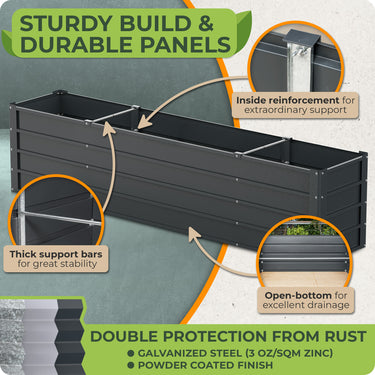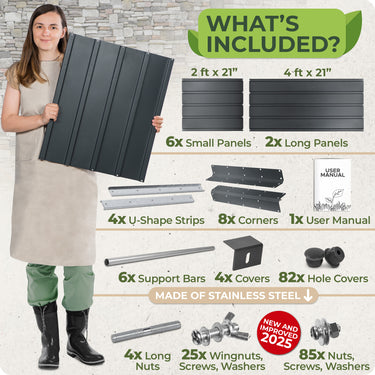
Photo source: Pexels.com
Watering your vegetable garden can feel like a balancing act - too little, and your crops suffer; too much, and you risk root rot. Discover how to find that perfect watering sweet spot to keep your plants happy and healthy, no matter the weather.
-
🪣Understanding the basics of watering: watering can be influenced by soil type, season, and timing.
-
🕓Identifying when your garden needs water: recognize signs of under- or over-watering and use tools to gauge soil moisture.
-
🤔How much water your garden needs: deep watering is more effective than frequent shallow watering, with 1-1.5 inches per week being the general guideline.
-
🌬️Environmental factors that affect watering: climate, sun exposure, and wind all impact your watering needs, and solutions like windbreaks can help.
Table of Contents
- 💧Getting to grips with watering basics
- 🚰Why watering is essential for plant health
- 🌱Soil type and its influence on watering
- 🍂The seasonal flow of watering needs
- 🗓️When to water for optimal results
- 🌻Spotting when your garden needs water
- 🍅Common signs of under-watering and over-watering
- ✋Testing soil moisture the old-fashioned way
- ⏱️Using moisture meters for precision
- 🚿How much water does your vegetable garden actually need?
- 🥕General watering requirements for most gardens
- 🌊The importance of deep watering
- 🥬Adjusting for different vegetables
- 🪵How mulch helps retain moisture
- ⛈️How environmental factors play into your watering routine
- 🌄Climate can influence watering needs
- 🌞Sun exposure and wind can also impact watering
- 🍃Using windbreaks to minimize moisture loss
- Special watering needs for different garden setups
- 🪴Watering raised beds and containers
- 🌶️Watering newly planted vegetables
- 🛢️Utilizing rain barrels for a greener garden
- 🛠️Boosting efficiency with the right irrigation tools
💧Getting to grips with watering basics
🚰Why watering is essential for plant health
Water does more than just hydrate your plants. It carries essential nutrients to their roots, regulates temperature, and supports the whole life cycle of your vegetables.
🌱Soil type and its influence on watering
Not all soil is created equal. Clay soil retains water, while sandy soil dries out quickly. Loamy soil strikes the balance, holding moisture but allowing drainage. This way you can determine how often and how much to water.
🍂The seasonal flow of watering needs
Adjust your routine to match the changing needs of your crops. In spring, a light watering is enough, but come summer, your garden will need more attention. As temperatures rise and your plants grow, their demand for water increases.
🗓️When to water for optimal results
The timing of watering is more important than you think. Early morning is ideal because it gives plants a chance to dry off before evening sets in, minimizing the risk of diseases like mildew. Watering in the late afternoon or evening is another option if you’re working with an intense midday sun.
🌻Spotting when your garden needs water
🍅Common signs of under-watering and over-watering
When plants are thirsty, they show it. Leaves curl, dry out, and sometimes turn brown at the edges. The soil around the base may crack, and plants become stunted. Also, while a wilting plant might look like it’s thirsty, it could actually be drowning. Yellow leaves, soggy soil, and a strong smell of mildew are signs that your plants are getting too much water.
✋Testing soil moisture the old-fashioned way
If you’re not sure whether your garden is getting enough water, simply dig a little. Stick your finger in the soil up to your first knuckle. If it feels dry, it’s time to water. If it’s damp, wait a day or two before checking again.
⏱️Using moisture meters for precision
A moisture meter can take the guesswork out of watering. It measures the moisture levels at root depth, giving you a precise reading of whether your garden is dry or just right.
🚿How much water does your vegetable garden actually need?
🥕General watering requirements for most gardens
In general, vegetable gardens need about 1-1.5 inches of water per week, which can come from rain or your watering system. However, the needs of your garden will change depending on the season, soil, and specific plants you’re growing.
🌊The importance of deep watering
Instead of watering shallowly every day, it’s better to give your garden a deep soak once or twice a week. Deep watering encourages roots to grow deep into the soil, which helps your plants better withstand dry spells and extreme temperatures.
🥬Adjusting for different vegetables
Tailor your watering schedule to suit the needs of each crop, so you can get the best yield possible. For example, some vegetables, like leafy greens, need consistent moisture, while others, like root vegetables, prefer drier conditions.
🪵How mulch helps retain moisture
A layer of mulch acts like a blanket for your garden, helping to conserve moisture in the soil. It also keeps weeds in check and regulates soil temperature, making it an essential tool for efficient watering. This is important especially in the heat of summer.
⛈️How environmental factors play into your watering routine
🌄Climate can influence watering needs
In dry, hot climates, your garden will need more frequent watering to stay hydrated. Conversely, cooler or rainy regions may require less attention. Knowing your local weather patterns will help you anticipate your garden’s watering needs before they become urgent.
🌞Sun exposure and wind can also impact watering
Plants in full sun or exposed to strong winds will lose moisture faster. If your garden is located in such conditions, you’ll need to adjust by watering more often or using shade cloths to protect delicate crops.
🍃Using windbreaks to minimize moisture loss
If your garden is regularly hit by strong winds, setting up windbreaks can protect your crops and reduce water loss. Fences, hedges, and trellises not only shield your plants from the elements but also help preserve moisture in the soil.
Special watering needs for different garden setups
🪴Watering raised beds and containers
Raised beds and containers dry out much faster than in-ground gardens. You’ll need to water them more frequently and check the soil moisture daily, especially during hot weather. Adding mulch can help slow down water evaporation.
🌶️Watering newly planted vegetables
Newly planted crops are particularly vulnerable because their root systems haven’t fully developed. Water them more often in the early stages to help them settle in, but avoid over-watering, as young plants are more susceptible to root rot.
🛢️Utilizing rain barrels for a greener garden
Rain barrels are a great eco-friendly solution for irrigating your garden. Not only do they save you money on water bills, but they also reduce your environmental footprint by making use of natural rainfall to hydrate your crops.
🛠️Boosting efficiency with the right irrigation tools
🛁Tubing: the foundation of effective watering
Tubing helps channel water directly to the plants, minimizing waste and ensuring that moisture reaches the root zones where it’s needed most. Whether you have raised beds, containers, or a traditional garden plot, the right tubing ensures a consistent and controlled distribution of water.
💦Delivering water where it counts with drip irrigation systems
Drip irrigation uses a network of tubing, emitters, and connectors to deliver water directly to plant roots. This method conserves water and reduces evaporation, ensuring that every drop counts. Moreover, drip irrigation systems are particularly beneficial for areas where water conservation is a priority and for gardeners who want a hands-off approach to consistent watering.
⏲️Precision watering for each plant
The small but mighty drippers and emitters are key components in any drip irrigation system. These devices regulate the flow of water, providing just the right amount to each plant, based on its needs. Adjustable drippers allow you to customize the water flow for different plants, while emitters ensure that water is delivered slowly and steadily at the plant’s base, promoting deeper root growth.
Watering your vegetable garden isn’t a one-size-fits-all task - it’s about adapting to the unique needs of your plants, the climate, and your garden setup. Remember that consistency is key - with the right approach, you’ll enjoy a healthy, thriving vegetable garden all year long!










